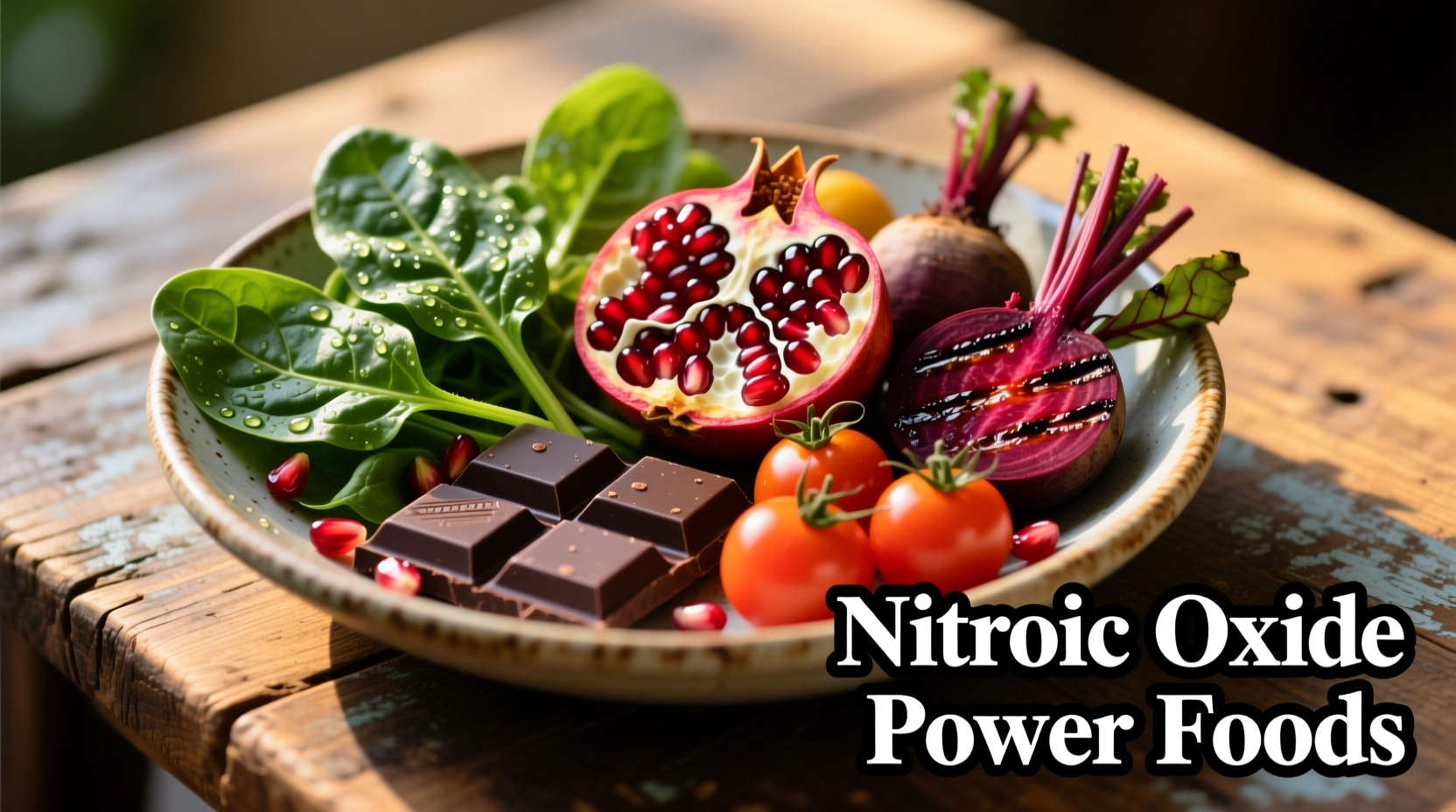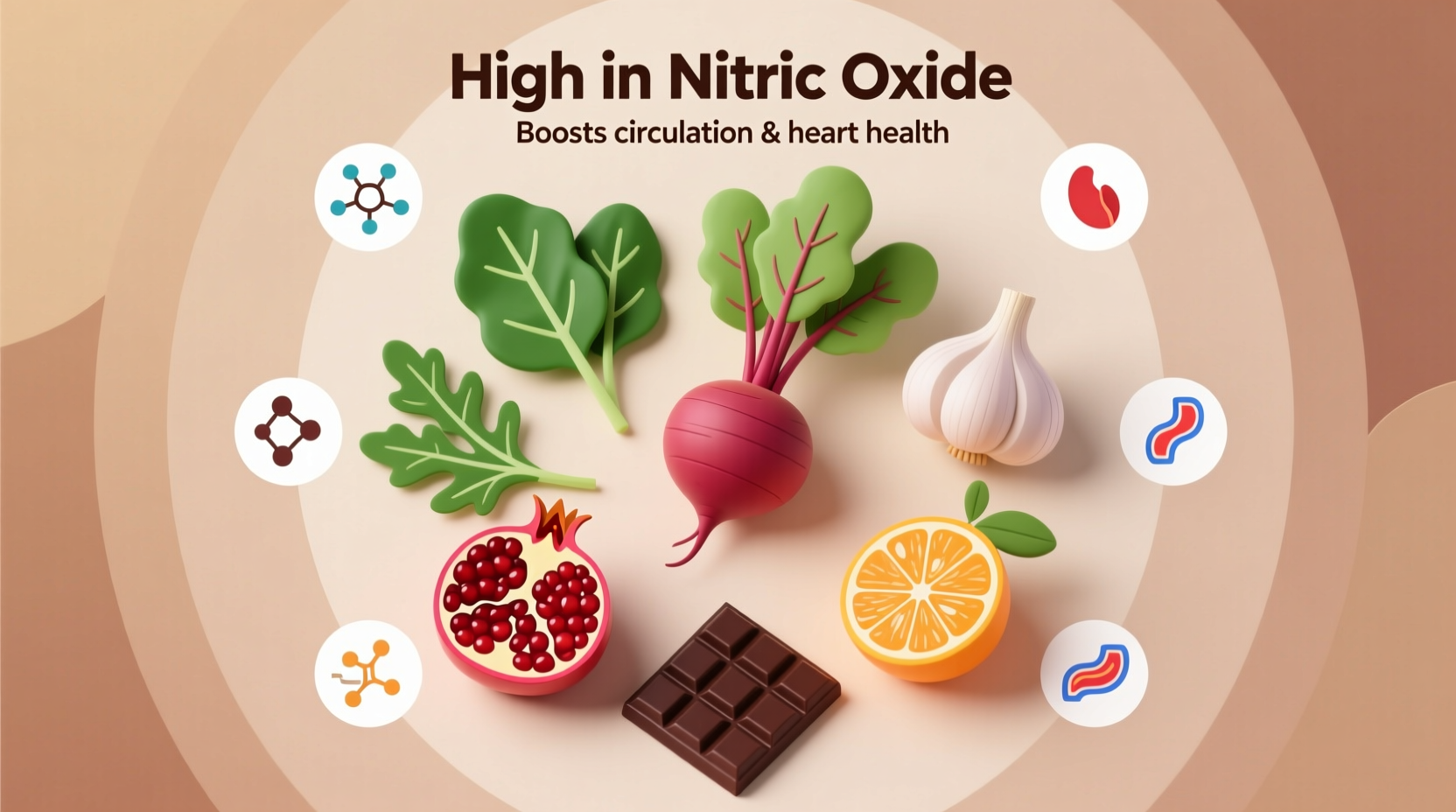Why Nitric Oxide Matters for Your Health
Nitric oxide (NO) is a vital signaling molecule that helps your blood vessels relax and dilate, improving circulation throughout your body. Nobel Prize-winning research established its critical role in cardiovascular function, earning it the nickname “endothelial-derived relaxing factor.” Unlike supplements, food sources provide natural compounds that your body converts to nitric oxide through a well-documented biochemical pathway.
When you consume nitrate-rich foods, beneficial bacteria in your mouth convert nitrates to nitrites, which then transform into nitric oxide in your bloodstream. This natural production method avoids the potential side effects of synthetic supplements while delivering additional phytonutrients that support overall health.
Your Complete Guide to Nitric Oxide-Boosting Foods
Understanding which foods deliver the most significant nitric oxide benefits requires examining their nitrate content and bioavailability. Research from the National Institutes of Health shows that certain vegetables contain substantially higher nitrate concentrations than others, making them particularly effective for supporting your body's nitric oxide production.
Top Vegetable Sources of Dietary Nitrates
Leafy greens dominate the list of nitric oxide-boosting foods, but their nitrate content varies significantly. The American Heart Association recognizes dietary nitrates from vegetables as beneficial for blood pressure management. Here's what clinical research reveals about the most effective options:
- Arugula - Contains approximately 460mg of nitrates per 100g, making it the single richest source. Its peppery flavor adds depth to salads while delivering maximum nitric oxide precursors.
- Spinach - Provides about 260mg of nitrates per 100g. Steam lightly rather than boiling to preserve maximum nitrate content while enhancing iron absorption.
- Swiss Chard - Offers 180mg of nitrates per 100g. Both the leaves and colorful stems contribute to nitric oxide production.
- Beets - Contains 140mg of nitrates per 100g. Beetroot juice has been extensively studied for athletic performance enhancement, with research showing measurable improvements in oxygen efficiency.
- Rhubarb - Surprisingly high with 130mg of nitrates per 100g, though typically consumed in smaller quantities due to its tart flavor.
| Food | Nitrate Content (mg per 100g) | Optimal Preparation | Key Research Findings |
|---|---|---|---|
| Arugula | 460 | Raw in salads | Most effective single food source for rapid NO elevation |
| Spinach | 260 | Lightly steamed | Improves endothelial function within 2 hours of consumption |
| Beets | 140 | Raw juice or roasted | Reduces blood pressure by 4-10 mmHg in clinical trials |
| Pomegranate | N/A (polyphenols) | Whole fruit or juice | Preserves existing NO by preventing oxidative breakdown |
Fruits That Support Nitric Oxide Pathways
While vegetables contain the highest nitrate concentrations, certain fruits enhance nitric oxide production through different mechanisms. Pomegranates, for example, don't contain significant nitrates but are rich in polyphenols that protect nitric oxide from oxidative degradation. According to research published in The American Journal of Cardiology, pomegranate juice consumption improved blood flow in patients with coronary artery disease by preserving existing nitric oxide.
Other beneficial fruits include:
- Berries - Blueberries, strawberries, and raspberries contain anthocyanins that support endothelial function
- Citrus fruits - Rich in vitamin C which helps stabilize nitric oxide
- Watermelon - Contains citrulline, an amino acid that converts to arginine and then to nitric oxide
Context Matters: When These Foods Deliver Maximum Benefit
The effectiveness of nitric oxide-boosting foods depends on several contextual factors that many sources overlook. Research from the American Physiological Society reveals important nuances:
- Oral microbiome health - Using antibacterial mouthwash after eating nitrate-rich foods can eliminate the beneficial bacteria needed for nitrate conversion, reducing benefits by up to 90% according to a 2016 study
- Timing matters - Consuming nitrate-rich foods 2-3 hours before exercise yields the greatest performance benefits
- Cooking methods affect potency - Boiling leaches nitrates into water, while steaming preserves more nutrients
- Individual variation - Genetics affect how efficiently people convert dietary nitrates to nitric oxide
Practical Daily Integration Strategies
Transforming this knowledge into daily habits requires simple, sustainable approaches. Based on clinical nutrition research, here's how to maximize benefits without drastic dietary changes:
Morning boost: Start your day with a green smoothie containing arugula, spinach, and a small beet. Add lemon juice (vitamin C) to enhance nitrate conversion. Avoid mouthwash for at least 30 minutes after consumption.
Pre-workout nutrition: Consume 100-200ml of beetroot juice 2-3 hours before exercise for measurable performance improvements, as demonstrated in multiple sports nutrition studies.
Daily minimum: Aim for at least 1 cup of raw leafy greens daily. Research shows consistent consumption maintains elevated nitric oxide levels, while sporadic intake provides only temporary benefits.

Avoiding Common Pitfalls
Several factors can undermine your nitric oxide production despite consuming the right foods:
- Processed foods - High sodium intake counteracts the blood pressure benefits of dietary nitrates
- Antibacterial mouthwash - Eliminates the oral bacteria essential for nitrate conversion
- Excessive heat processing - Boiling vegetables can reduce nitrate content by up to 50%
- Nitrate-free water - Some filtration systems remove naturally occurring nitrates that contribute to daily intake
For optimal results, combine nitrate-rich vegetables with vitamin C sources (like citrus or bell peppers) in the same meal. This pairing enhances the conversion process while protecting the resulting nitric oxide from degradation.
Realistic Expectations: What the Research Shows
Clinical evidence demonstrates that consistent consumption of nitric oxide-boosting foods delivers measurable benefits, but expectations should be realistic. Studies show:
- Blood pressure reductions of 4-10 mmHg within hours of consumption
- Exercise endurance improvements of 5-15% in trained athletes
- Enhanced blood flow visible through vascular function tests within 2 hours
- Maximum benefits require consistent daily consumption rather than occasional intake
These effects represent meaningful improvements for cardiovascular health, but they work best as part of an overall healthy lifestyle rather than as standalone solutions.











 浙公网安备
33010002000092号
浙公网安备
33010002000092号 浙B2-20120091-4
浙B2-20120091-4